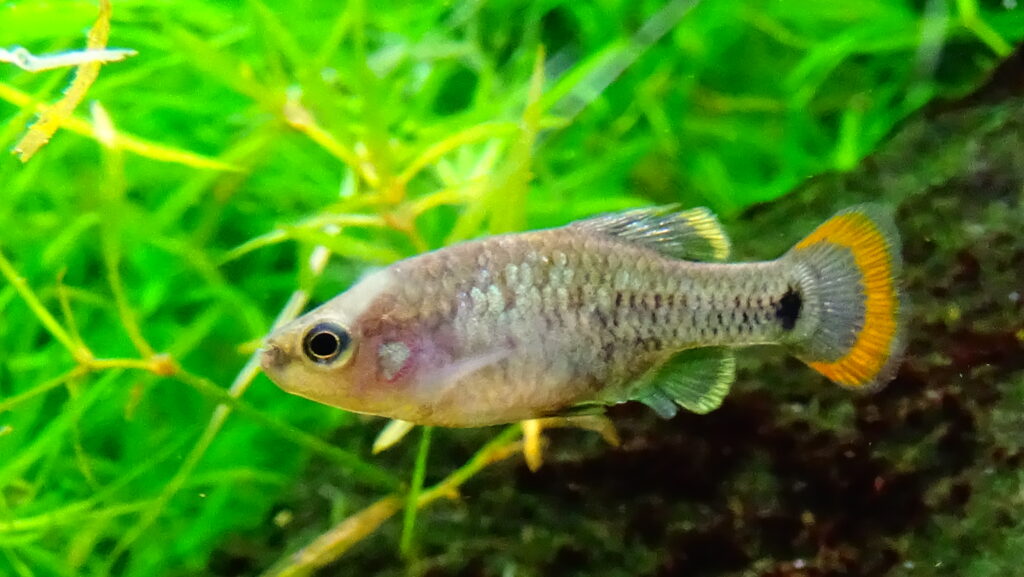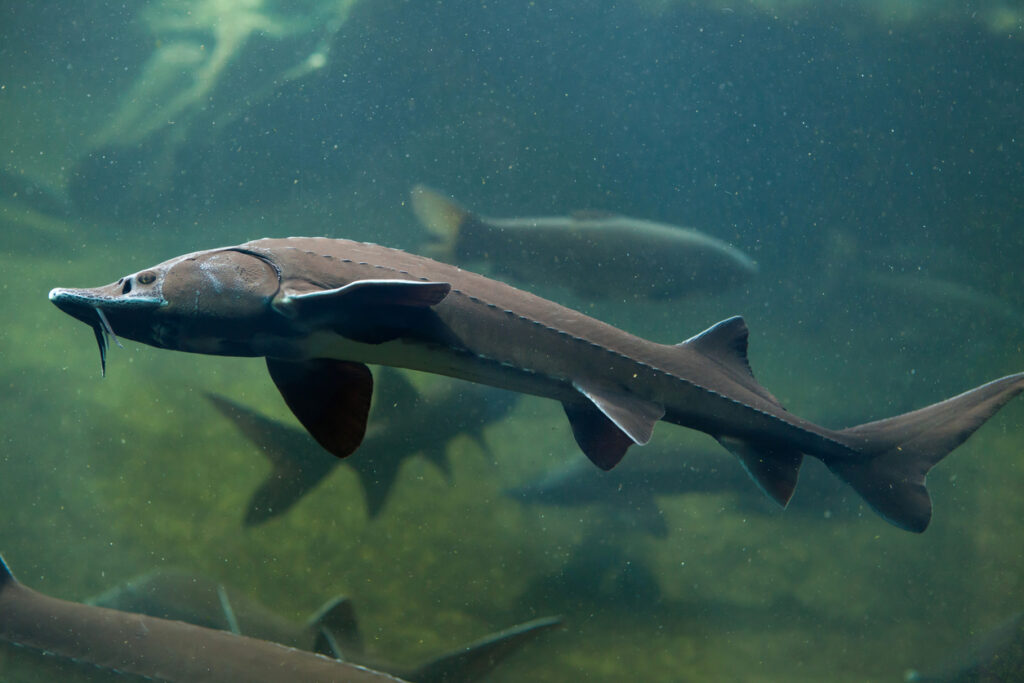Either as a result of evolution or through no fault of their own, some fish are considerably rarer than others. Indeed, some species are now so scarce that their numbers are almost down to just three digits, both as a result of natural processes and, sadly, human-influenced habitat loss and decline.
The question is, what is the rarest fish in the world? And what are the reasons behind their dwindling numbers? These are questions we aim to answer in today’s post, along with a word on the importance of conservation and the steps being taken to preserve rare fish and marine species across the globe.
Fish species that are few and far between
Before we dive into our list of the world’s rarest fish, it’s important to remember that marine animal populations are extremely difficult to track, with seasonal and location-based variations often skewing the numbers from one year to the next.
However, thanks to the continued efforts of the IUCN (International Union for Conservation of Nature), we do now have a pretty accurate picture of the most vulnerable and at-risk species, so it is possible to list the rarest fish on Earth based on IUCN data.
With that in mind, here are five of the least common fish species, including both salt and freshwater animals.
Devils Hole pupfish (Cyprinodon diabolis)
Now classed as critically endangered by the IUCN, the Devils Hole pupfish is arguably the rarest fish in the world. According to the most recent count conducted by US marine biologists in 2022, there are now thought to be just 263 pupfish left in the wild, though efforts to bolster their numbers and create other populations are still ongoing.
So, why is the Devils Hole pupfish so rare? Well, that’s primarily down to the fact that the fish is found in only one location: Devils Hole. This is a water-logged cavern in the Death Valley region of Nevada, US, and is recognised as the only place where Cyprinodon diabolis are found in the wild.
While the fish’s numbers are declining, efforts are being made to protect it from extinction. Devils Hole itself was certified as a National Monument in 1952 in a bid to safeguard pupfish populations, while the Ash Meadows Fish Conservation Facility, built in 2013, continues to play an active role in maintaining the animal’s numbers.
Tequila splitfin (Zoogoneticus tequila)
No points for guessing where the Tequila splitfin originates – it’s Mexico, of course! Thought to have gone extinct back in 2003, the Tequila splitfin fish [BSA1] seemingly disappeared from its native habitat in the Ameca River basin, with its demise blamed on invasive species and water pollution.
Happily, the fish was rediscovered by researchers, who have since spearheaded a campaign to grow the Tequila splitfin population in the Ameca River basin. Conservation efforts for this rare species have proven extremely successful, with the IUCN now classifying the fish as [BSA2] only “Endangered”, not critically.
Of course, much more work is required to ensure the long-term stability of Tequila splitfin’s numbers, with the animal’s native home – a single pool close to the town of Teuchitlán, Mexico – still threatened by water pollution and habitat deterioration. The Tequila splitfin is a popular species among aquarists, and you can see this rare fish for yourself as part of our Flooded Forest exhibit.

Russian sturgeon (Acipenser gueldenstaedtii)
It’s hard to believe that a fish as formidable-looking as the mighty Russian sturgeon would be vulnerable to population decline. After all, these freshwater fish can grow over two metres in length, with spiky, armoured scales to deter would-be predators.
Why, then, is the Russian sturgeon classified as critically endangered by the IUCN? Well, there are several reasons for this, the first being just how long-lived and slow-growing these impressive freshwater fish are.
Most sturgeon take years to grow and mature, meaning they reproduce and spawn at a much slower rate than other freshwater species. Acipenser gueldenstaedtii reproduce at a particularly slow rate, meaning that their numbers are naturally susceptible to decline.
Of course, human influence has also had an impact on Russian sturgeon populations, with water pollution and overfishing causing a sharp decline in their numbers. A programme of conservation is in place, though this is more focused on protecting the Beluga (Huso huso), which is prized for its caviar.
Siberian sturgeon (Acipenser baerii)
The Siberian sturgeon (Acipenser baerii) has a lot to contend with in the wild. From the unforgiving and unfathomably cold waters of the Siberian River basin to the fact that the fish is highly sought after as a source of caviar – it’s little wonder that the fish is now, sadly, classified as critically endangered by the IUCN.
Much like its Russian cousin, the Siberian sturgeon is a long-lived fish, with an average lifespan of up to 65 years. The species doesn’t reach sexual maturity and begin to reproduce until around 15 years, which is why it’s so vulnerable to things like overfishing.
Increasingly, too, damming across the Siberian River basin is having a huge impact on sturgeon populations, compounded further by high levels of pollution that are destroying the fish’s native freshwater habitat. Only time will tell if the species can withstand the growing pressures it faces in the wild.
Come see the Siberian sturgeon for yourself at our Northern Streams exhibit.

Red handfish (Thymichthys politus)
It’s easy to see where the red handfish (Thymichthys politus) gets its name. This frankly adorable ray-finned fish appears to have a set of arms complete with a pair of red hands. They’re fins, of course, but it’s an apt moniker nonetheless.
Once found in several locations around the Australian island of Tasmania, red handfish are now only found on two small reef systems in the region’s Frederick Henry Bay. Biologists report that there could be as few as 100 red handfish remaining in the wild, with their numbers threatened by a growing population of native purple urchins (which graze on the seaweed that red handfish rely on for shelter and spawning) and climate-accelerated habitat loss.
The good news is that conservation efforts are underway, and proving successful. In November 2023, the Tasmanian Institute for Marine and Antarctic Studies announced that they had successfully bred 21 new red handfish in captivity, giving this rare fish’s population a much-needed boost.
Looking after our world’s fish
While global marine populations are prone to natural fluctuation, there is no getting away from the fact that human activity is having a devastating impact on rare and endangered species all around the world. This makes marine conservation more important than ever.
Blue Planet Aquarium is dedicated to continuing its work in supporting charities and organisations which are working tirelessly to protect some of the most vulnerable species in our seas and oceans. We work alongside excellent partners that play an active role in maintaining rare fish numbers, while also organising local events like beach cleans to promote marine conservation in our local community.
Learn more about conservation at Blue Planet Aquarium here.
We hope you’ve enjoyed this fascinating look at some of our planet’s rarest fish and can appreciate just how precious these animals are. To see some of these creatures in the flesh, book your tickets to Blue Planet Aquarium today.
